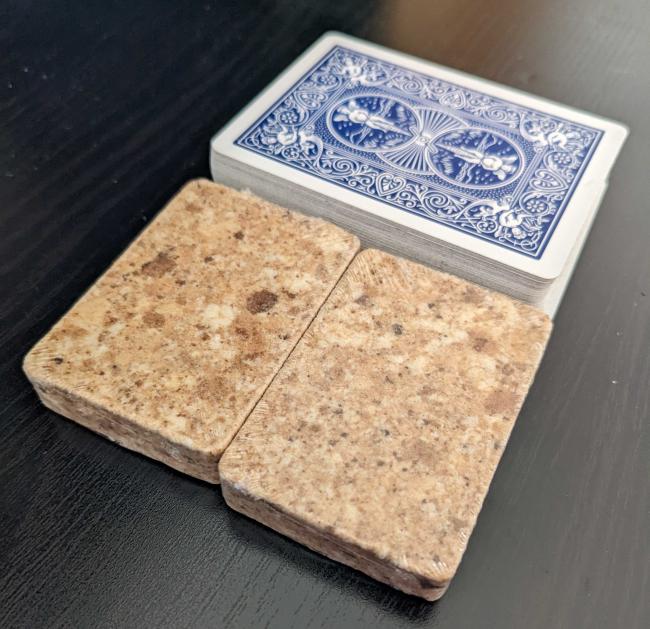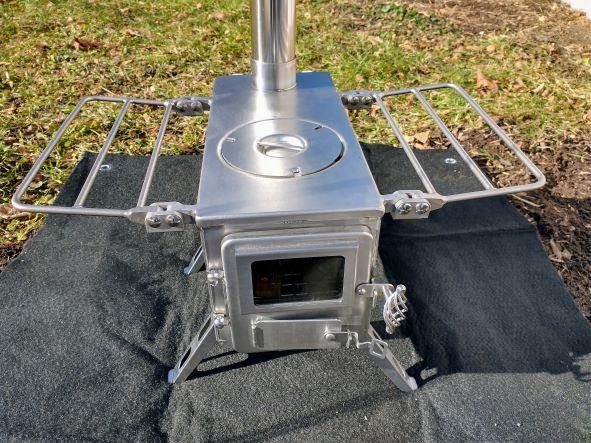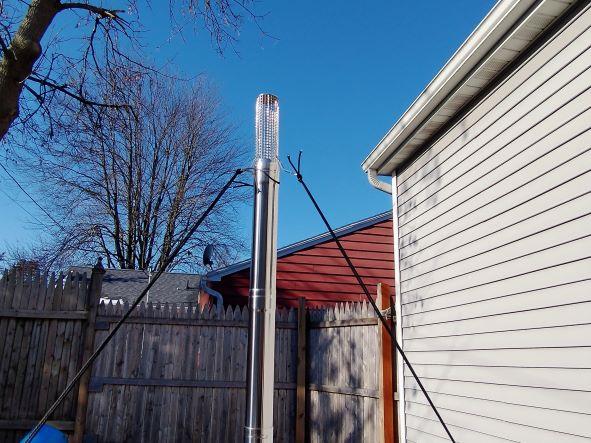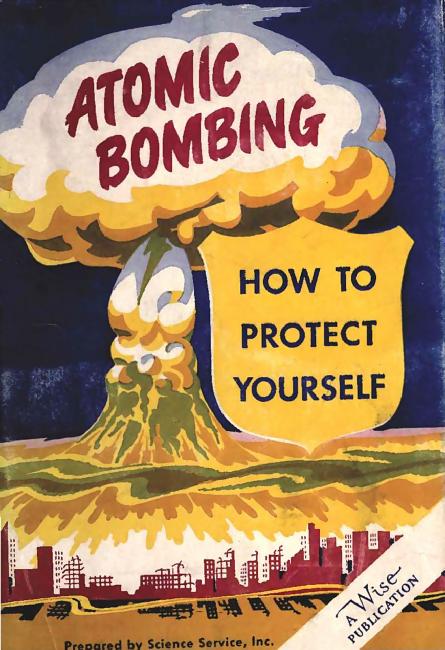Share your knowledge & learn from experts
Because prepping and community go hand in hand
Looking for recommendations on an air mattress
Any recommendations on an air mattress? I wanted to get one or two queen size with an built-in pump to be used for the occasional emergency use or guest.
Read MoreShelf-stable pantry meals for snobs
there are lots of lists online of meals that you can make from your emergency or long-term food storage, but a lot of them cover the same, uh, familiar American ground. i thought we could brainstorm some more exciting ideas for eating out of your emergency pantry. I’ll start off with a couple on my list:
Meatless mapo tofu — (silken tofu in aseptic packages is shelf stable!)
Soondubu jjigae (soft tofu kimchi stew)
Masoor (red lentil) dal — red lentils cook so fast
what do y’all make out of your pantry?
Read MoreWhat was the catalyst that compelled you to begin prepping?
I’m curious about what caused you to begin your journey to being prepared. For me, it really started in 1962….We lived in the Washington DC suburbs and most of our neighbors were government types or military. The trouble brewing in Cuba was only a secret to the rest of the country. Amongst federal employees, they knew something was afoot, maybe just not how serious is was about to become. Washington DC was ringed by Nike & Nike-Hercules missile sites….and the one near our home was 1 of only 2 who had nuclear payloads in those missiles, designed to shoot down incoming Russian missiles. ( although no one knew it then) One afternoon, we were driving home when we passed by the Lorton Nike Missile Site…and all of the missiles were erected and pointed skyward. We had never seen that before. We went on home and my dad turned on the tv and we heard like most others in the US, just how close we were to launch. My dad threw a bunch of our camping gear into the pickup and we headed to our normal camp grounds SW of Washington in the Shenandoah National Park. We stayed there until the trouble was over.(We bugged out!) I don’t remember exactly how long, I was only 8 at the time, but it was several days. I do remember the park being totally full and the new arrivals were sent off to camp in the “overflow area”. Little did we know then that we were camped next to a primary target not far away. The Greenbriar Hotel and Mount Weather…which was still very much a secret. The Cuban Missile Crisis is what spurred me into later becoming a prepper. By 1978, I had 6 weeks of supplies stored away but still living in DC area. The DC area used to have air raid siren tests once a month and the gov. would hold practice evacuations via helicopter a couple times a year….I lived within sight of the Pentagon….and the choppers would come right over the house during the practices. So survival was frequently on my mind as a young man and a couple years in Army Intel didn’t do anything to slow that down. So what’s your excuse? 9/11? Today’s troubles in Ukraine? Banking collapse?
Read More
How do you prioritize gear purchases? Anyone have an organized system?
So here’s my problem: While I’m not at all new to prepping, I’m fairly new to the opportunity for online shopping (just got my first credit card during the pandemic) and I’m realizing that my old “system” of making impulse purchases every time I see cool gear I want, is not going to cut it anymore;)
I used to mostly buy prepping gear at flea markets, yard sales, second hand stores, so I basically just bought stuff in the order I found it, rather than in order of how likely we were to need it, how life-or-death that need could be, or anything of that nature.
Now I keep seeing things I want (mostly on this forum, btw) that are all just a click away, and I’m realizing I need to make some sort of list of things I want and what order to purchase them in. I’m not talking about things like food storage or tools we use in daily life (groceries and homesteading expenses have their own budgets) but all the fun prepping gear I want “just in case” which is coming out of my fairly small “personal hobbies” budget.
Do any of you keep such a list? And if so, is it organized purely by how much you want each item, checking things off from the top of the list as you can afford them, regardless of other factors? Or is price factored in somehow? For example I might want a $400 item more than any one $40 item, but if purchasing it first means holding off on ten different $40 items, the decision becomes more complicated. At the same time, I don’t want to endlessly boot the most expensive items to the end of the list, if they’re something really useful or fun.
What system do others use?
Read MoreTwenty ways to prepare for civil unrest
Here are 20 ways you can prepare for potential civil unrest:
Stay informed about current events and potential threats in your area.Create an emergency plan for you and your family, including a designated meeting place and a way to communicate if you are separated.Build an emergency supply kit with enough food, water, and other essential supplies to last at least three days.Consider storing extra supplies, such as non-perishable food, water, and medical supplies, in case of a prolonged disruption.Consider securing your home by reinforcing doors and windows, and installing security cameras or alarms.Keep your car fueled up and make sure it is in good working order, in case you need to evacuate.Have cash on hand in case ATMs and credit card systems are not functioning.Consider storing important documents, such as identification, insurance policies, and bank account information, in a safe place.Take a first aid and CPR class, so that you can help yourself and others in case of injury.Learn self-defense techniques, so that you can protect yourself and your family if necessary.Consider purchasing a firearm and taking a firearms safety course, if you are legally allowed to do so and feel comfortable using one.Stay calm and avoid panicking, as this can make a difficult situation even worse.Avoid crowds and large gatherings, as they can quickly turn violent.Follow the instructions of law enforcement and emergency personnel, who are trained to handle these situations.Avoid confrontations and stay out of areas where violence is occurring.Be prepared to shelter in place, if necessary, and have a plan for how to do so safely.Have a plan for how to evacuate if necessary, and know the routes to take to avoid areas of unrest.If you see something suspicious, report it to law enforcement immediately.Stay in contact with your friends and family, and check on them regularly to make sure they are safe.Keep a positive attitude and stay strong, even in difficult times.
http://www.thesanctumchiangmai.com
Read MorePreparedness podcasts?
Hi all,
I’m curious as to whether any of you have any preparedness podcasts that you enjoy, or even singular podcast episodes — perhaps interviews with preparedness experts talking about what they have and do and why, scientists who have expertise relevant to natural disasters and response thereto, first responders, structural and civil engineers, or people who work in government on disaster readiness and response.
I like that The Prepared doesn’t pick sides politically and is focused on providing high quality information, so anything that is similar to this site in those dimensions would be especially appreciated. The one thing I’ve found so far that I like is “Getting Through It” with Dr. Lucy Jones, which is really interesting, but it’s a lot more about the social and natural science of disasters than how we prepare for them.
Thanks for any ideas!
[Edited to add: I’m asking because I often stay up too late sewing or reading preparedness-related content on the internet. Listening to preparedness-related content while sewing seems like it would be an efficiency gain.] Read MoreWhat does prepping look like in your area of the world?
I’m sure we have forum users here from every state of the US, from many different countries, and probably every continent. I’d love to see what prepping looks like all over the world.
So please introduce yourself and where you live. (can be a specific US state, just general area such as the South East USA, or country)
How do you prep in your area that may be different than how someone else may prep? (in Alaska your car has to have a snow shovel and gun at all times, or in Argentina you have to carry extra water and mosquito repellent)
What disasters, natural or manmade, have you dealt with or are prepping for in your area? (earthquake, tornado, flood, civil unrest)
Areas represented so far below: South East Australia, Colorado USA, Virginia USA, Southern California USA, Pacific Northwest USA, Wisconsin USA, Northern New England, French countryside, South Eastern USA, South Carolina USA, an island in southern South America, London UK, Northern Mississippi USA, Manitoba Central Canada, Manawatu New Zealand, Northern England, West Midlands UK, Caribbean, Italy, South East Queensland Australia, US Eastern seaboard, Salt Lake Valley Utah USA, Nevada USA, mid Wales UK,
Read MorePreliminary review of EcoZoom Versa rocket stove
First Impression: I am going to LOVE cooking on this stove!
I just got this thing this afternoon and could not WAIT to try it out.
It is small enough to fit perfectly on my Dutch oven table, which “lives” on our covered wooden deck. I thought I’d have a lot of safety concerns about burning this device on the deck but now – with all due caution of course – I do not. I think my most important impression is that it seems virtually windproof. The fire is thoroughly protected within the body of the unit. The metal table also has a wind screen. I don’t have another outdoor cooking device that is this likely to survive a windy cooking session.
I was nervous about starting with wood, but I wasn’t getting any usable heat out of six charcoal briquettes after 20 minutes (too far below the grate – more briquettes would have done the job, but the the object of this device is to be able to cook with scrounged materials). So I broke down and fed three skinny sticks of fir kindling into the firebox.
It smokes quite a bit until it warms up and really starts to draw, after that it was smokeless.
After putting the kindling in, it took about 20 minutes to heat a quart of water to boiling. (Oh, it was 40 deg F outside). Closing the lower draft door brought the temperature back down to a simmer, but it took a little while. I’ll be using one of my heat diffusers with it, probably.
My three little sticks of softwood kindling burned for 45 minutes. Yes, it does need to be tended.
The fire never crept out of the fire box. It did not burn the wood sticking out the door.
The cooking surface is pretty neat. There are ridges that hug the bottom of the pot and stabilize it.
If I could have anything, it would be some sort of lid to help snuff the fire, along with closing the doors.
I absolutely LOVE this stove. My next experiment will be with hardwood kindling, perhaps varying the number of pieces. (The sticks in the picture were about 1″ diameter and a foot long.) Then probably scrounged sticks which are plentiful here.
Barbecue tongs and gloves are useful. It will be a little while before I can actually cook on it, but my inner Outdoor Cook says this stove is a winner.
Read More![20221128_151515[1]](https://theprepared.com/wp-content/uploads/hm_bbpui/99375/aufawg9d99vuh4joeje8b3d32qlw6r07.jpg)
How do you decide that bad just went to worse?
Some of the incidents during and after major disasters like Hurricane Katrina have made me wonder about escalation decisions. How do you decide when an emergency situation becomes a survival situation? For instance, the incident involving a police officer from New Orleans who opened fire on refugees from another nearby small town during Katrina….not going to go into the political or racial discussions on those decisions, but do have to wonder when this and other officers decided the “rule of law” was no longer valid and it became every man for himself. At what point would you consider defending your shelter, family and supplies from “others” be they looters, refugees or just bystanders who happen to be passing near by? Thinking on the classic Twilight Zone episode “The Shelter”. Just food for thought.
Read More
An observation on prepping in 2022
Two years of Covid 19 and the shortages of everything from food to lumber, people basically locked down for months on end, economic chaos that followed, Everything more expensive etc.
That event alone seriously stifled the mocking voices who laughed at those of us who were wise enough to get involving with prepping.
Then just as Covid 19 started to fade from the news along comes the Russian invasion of Ukraine and the mad panic to rearm by NATO, The conflict itself and the growing wave of sanctions plunged the world back into a situation once again of shortages of energy, food, fuel and raw materials, massive price rises, security threats and risks.
OPEN threats of nuclear weapons being used, mass migration from the east have followed. The global economy taking yet another pounding, tax rises are inevitable, already wheat, animal feed, diesel, fertiliser, nickel, titanium etc prices are rocketing and shortages announced.
In my country energy prices have risen FOURTEEN times faster than wages already, the combined gas and electricity bill for the average British house has gone up from around £1200 to £1900 and is forecast to get as high as £4500 by October. Petrol has rocketed up in days from £1.45 a litre to £1.70 a litre.
All rather grim reading I’m sorry to say, BUT The mocking of preppers has stopped all together, and people enquiring about how to get started in prepping / off gridding and homesteading is increasing every day.
Sales of Heritage seeds is UP, people getting Allotments (small food growing plots of land) is UP, people installing WOOD BURNING stoves UP, People caching and stock piling UP, People buying Micro wind turbines and PV panels UP, People selling up and relocating OUT OF TOWN up over 30% according to some UK media sources etc
So my oberservation is this
” Why does it take TWO global crises to make people wake to to the vulnerability of society to disruption, and for them to see the benefits of prepping”.
A report I read about two years ago estimated that 30 million of you folks in the Americas are into prepping in one form or another. I think that number is likely to rise now.
Read MoreTeach me about life insurance
I don’t feel any immediate need to get life insurance because I am relatively healthy, but accidents happen. In addition, with things costing more lately than they have been in previous years, I am seeing how hard keeping up with the bills and cost of living would be for my wife if I were to pass away.
I know nothing about life insurance, but might want to consider it. Can you all tell me if you have it, do you know of anyone who has had to cash it in, how do you shop for it, what kinds are there, things like that.
Read MoreA prepper’s perspective on gratitude this November
Hello! I’ve spent the past few days browsing this site since seeing it on 60 Minutes and have to say that so far it’s exactly what I needed in my life right now. Who knew there were AA batteries with a USB port in the side to charge them with!? Well apparently this site!
Something that is always on my mind this time of year and something I want to personally work on is gratitude. To make it relevant to this forum though, I want to share my thoughts about how being grateful is important for your mental health and for preparing in general. I have been prepping for the past 4-5 years, so I’m in no way an expert, but can say I have a basic knowledge that hopefully applies.
I find it ironic that on Thanksgiving day we sit down and with our loved ones and talk about all the things we are thankful for and then head out the next day and fight people over a coffee maker that is $20 off and we already have one that works.
Gratitude is overcoming discontentment of wanting more things. And not necessarily just things, but also wanting more experiences, more success, more recognition, a better job, a better marriage, and more more more more.
While those AA batteries that I saw and are so fascinated with are now definitely things I want, I took a moment to realize that I have about 30 disposables still and a handful of rechargeable ones that you plug into a brick to charge. I don’t need any more and need to be content and grateful for what I have. The cool batteries though will be on my mind when it does come time to replace the older rechargeables and if you didn’t have any rechargeable batteries before then that could be a good investment. Take a minute to analyze if you really need something versus just being a want.
Look at your unfulfilled desires and be okay with not having everything. “I’ll be happy when I buy that new car.” or “That new camp stove sure will make life easier” There’s always something to strive for and want isn’t there? Take the richest man in the entire world for example. He is still trying to obtain more things, the company Twitter being the latest example. It’s only in our nature to want more things and there is always one more thing you could have, even if you are the richest person in the world. Gratitude is being content with whatever you have, be it only the clothes on your back, what you currently have, or even if you are filthy rich.
It is hard to not compare yourself with others. Hearing about that person who just won over 2 billion dollars in the lottery, or someone driving by in their nice sports car, you think about what it would be like to be like that person don’t you? I do. Something that can help you though is to consider that if you are reading this right now, you probably are in the top 5% of wealth in the entire world. There are so many people who have so much less than you. People who may have no home, no food, no job, no legs, no sight, no family, no friends, no hope. There’s always someone above you who has more than you, but there is most likely a lot more people who would do anything to have what you have. Your life might just be that sports car envy of someone else. And just how I think about how I wish all those super wealthy people would just walk up to me and pay off my house, what do I do with my wealth and helping those around me?
I don’t want to go too long with this, but just want to remind people that it is important to be grateful for what you have. When we were born, we came into this world with absolutely nothing. You have much more than what you started off with right? Even if you lose it all in an earthquake tomorrow, you have so many past experiences and even the ability to read my ramblings right now. We have so much!
Survival is about being resourceful with what you have and making the best out of your current situation. Replacing the old generator with a new one would be nice, but you have a functioning one now that you can tune up and get more life out of and even if you didn’t have that, you probably could get by like so many people did before the generator was even invented.
Gratefully yours,
Debby
Read MoreCheck your gasoline supply
Rail strike is a remote possibility on December 9th. I doubt it will be allowed to go that far but if the commenting Im hearing from railroaders is to be believed, they’re ready to force the issue….and that could make for a gas shortage in some areas of the country.
https://www.politico.com/news/2022/11/28/freight-rail-shutdown-fuel-supply-00070980
Read MoreFavorite brand of insulated coveralls?
UPDATE: The coveralls on Amazon are counterfeits—I confirmed with Carhartt that they don’t use plastic zippers.
I recently learned about the existence of insulated coveralls from the extreme cold weather gear article and I’m enchanted. It links to a Carhartt brand model which is no longer available. I looked at current Carhatt models and they get mixed reviews; some people don’t like the cheap zippers and the fact that the new models don’t allow access to inside pants pockets.
Does anyone have a favorite brand of insulated coveralls you’d recommend?
Read MoreWhat to attach to a Plate Carrier
I’m thinking of getting a plate carrier and some level III+ body armor, but want to plan out what gear I will attach to my plate carrier because that will heavily influense which one I get.
I want to have a small ham radio, at least two AR15 mags, and two glock mags attached.
What do you have attached to your plate carrier? What does your ideal setup look like?
I’d love to see pictures of your setup if you could snap a quick pic.
Read MoreIllumination during a power outage
We were enjoying the wood stove and the warm glow of the Aladdin lamps last night, rather absorbed in talking about the lamps, when I suddenly realized I had no idea of the state of our preps for dispelling the darkness in an extended power outage. I’m a kindergarten prepper compared to others on this list. My goal is to prepare for three months of independence. So I’ve been trying to take stock all day of emergency light sources and things can be improved.
I learned that the Aladdin lamps are good for roughly 10 hours of lighting (probably on low) on a 1 quart fill of kerosene. (I love these fussy little prima donnas!) It seems that my approximately five gallons of kerosene (all designated lamp fuel) would net about 50 days of light, burning four hours a day. Seems we need another five gallons to slightly exceed three months. (My primary concern is earthquakes.)
Battery powered lanterns: We have assorted Coleman battery powered lanterns. Each takes eight D-cells. D-cells are over $2 each now. I looked at the Amazon page for our newest LED lantern and was hurtfully misled by the main advertisement for run time. Scrolling through the specs revealed the actual run time to be about 1/3 what they were claiming in the ad. I think it actually worked out to about $1 for every hour the lantern is used, compared to the Aladdin’s roughly $0.28/hour.
But, once you light an Aladdin, you don’t want to move it. The lantern is good for going out to the barn. D-cells are also necessary for flashlights. I carry a heavy Maglite to the barn every morning and night, partly for illumination, partly because I’m skeered of mountain lions! LOL! Just in case I need to clock a mountain lion in the head (as if I’d get a chance!)
Candles: Pfft.
Solar: I read and very much appreciate the recent review of several solar light sources. Here in the maritime Pacific Northwest, it is estimated we get about 26% of available sunlight during the winter. Hubby is extremely resistant to anything solar. We just don’t get any sun.
Generator: As long as the gas and/or propane last, it is possible to run some 120V lights in the house. That would be kerosene-sparing, since a generator HAS to be run to access the deep well pump, and run the septic pump and freezers. The generator was actually the cheapest “lighting” source, but gasoline storage is a problem.
Since I’m the chief cook and bottle washer, I tend to focus on food supplies and redundant cooking resources. Warmth is stored in piles of cordwood. “Power” is stored to the extent possible in gas cans and propane tanks. But plain old LIGHT. Seems I’ve taken it a little less seriously than I should.
Read MoreLiving off a Datrex ration block for 2 days
Before investing the Datrex lifeboat ration block to my bug out bag, I wanted to see if I could even stomach the taste and if my body would do well on it. Putting my body out there for science, I only ate these rations for two days. Well, I’m proud to announce that I survived and am writing this now.
The ration block was easy to tear open using the ‘Tear Here’ line at the top. Inside you could see that the packaging is a foil material which looks to be airtight. Cookies are individually wrapped in tight plastic wrap and two are the same length and width as a playing card and are about ¾ of the height.
The cookies were extremely crumbly, so make sure to collect all those crumbs and not waste them. The flavor was very subtle which I liked and if I had an upset stomach I could probably still eat these. To me, they tasted like a soft, crumbly, powdery, dry, graham cracker. They were very dry in texture and taste, but surprisingly not thirst promoting like you would normally think with dry foods.
The instructions on the packaging say that if you were on a lifeboat at sea, to eat one bar every 6 hours, which equals out to 800 calories a day. There are also instructions for an emergency on land and it says to eat one bar every 4 hours which equals out to 1200 calories a day. That makes sense because you most likely are burning more calories on land than if you were sitting in a lifeboat.
For my experiment, I wasn’t going to wake up every four hours though to eat a cookie, and I wanted to maintain my about 1700 calorie per day diet as to not stress out my system too much. Here are the options I thought about running:
S o every four hours that I am awake, I need to eat 2 cookies to get 1600 calories a day. This is an example of crunching the numbers and trying the product before you need to rely on it. Depending on the situation, you may just want those few calories to survive, and if you were not in a dire circumstance then you probably could splurge a little more like me and maintain the amount of calories you are used to.
It felt I was in a futuristic sci-fi movie where they get their nutrient pill ration. I enjoyed these past two days though, no cooking, cleaning, or time spent eating. It took me about a minute to eat two cookies and I was done. The ingredients and nutritional value is very low so this isn’t going to be a regular meal, but it was nice for two days.
About 30 minutes after each of my little meals I would get a sudden burst of energy that would last for for about 3 hours. The 30 minutes before my next meal would seem like a drag. This implies to me that these are fast burning carbs and give you a lot of energy for a short period of time. Probably another reason why they space them out every 4 hours.
I was craving some homemade potato fries cooked in the oven coated in coconut oil. I don’t know what that means, but I think these Datrex cookies are fast burning and my body needs more slower burning fuel from fat. These cookies were great for breakfast and lunch, but come dinner time I wanted some real food. I probably will store a few multivitamin pills along with future Datrex ration blocks to even out the nutrients.
I was glad to have this experiment over and to go back to normal food. I could go more days on just Datrex, but I just feel better with more variety. That gives me a thought to not only have these ration blocks in a bug out bag but also include some variety granola bars to vary things up. I am glad that I did this experiment and have more confidence in my future preps.
Read More
Flood Barriers: alternatives to sandbags
With more and more flooding situations happening, and having grown up in a costal area, I’ve been thinking about alternatives to sandbags. They don’t seem very practical, as you have to have access to a lot of sand or dirt, they are a lot of work to fill, and they are heavy.
One option I found was water-activated flood barriers. You lay them out and the flood waters activate the material inside and soak up the water to create a barrier. They are relatively compact, lightweight, can be ready to go in minutes, are stackable, and do not need to be pre-filled. The downside is they take months to dry out, but I’d rather have that problem versus water damage. An example is at https://www.amazon.com/dp/B0085S2DEU. I was able to buy some in 2020 at half priced.
You could also go commando like this guy did. He saved his home from over $100,000 in repairs. Reminds me of someone else long ago who did something a little different before a flood. https://www.wideopencountry.com/houston-man-uses-massive-inflatable-dam-save-house/
Read MoreA reminder to check the expiration dates on your IDs
Today I had a head smacking moment when I was looking through my wallet and realized that my concealed carry permit expired back in February! 9 months expired!
This could have been really bad if I had used my weapon in self defense and then had to show the officers an expired permit, because I have been carrying constantly during that entire time.
I am going to have to pay for my mistake now because since I passed the 6 months of having my permit expired I can’t just pay the renewal fee online but have to attend an entirely new class, go through the background check and fingerprinting again, and pay the full new permit holder price. Yikes! It’s going to be a multiple month long process to get going again and cost three times as much.
I have definitely learned my lesson and am making calendar reminders for the expiration dates on all my IDs in my wallet and will help my wife do the same.
Check your expiration dates!
Read MoreWinnerwell Nomad camp stove
One of the gaps in my prepping was that I never learned how to start a fire, keep it lit, use its warmth, put it out, and manage the ashes. Someone here mentioned the Winnerwell Nomad camp stove (thank you), so I bought it and recently used it for the first time. I bought the small version, along with a fireproof mat and the “water tank” that nestles against the chimney.
It’s compact and easy to assemble. I liked the three eyelets on the spark arrestor for attaching guy lines to tent stakes to keep the chimney steady in the wind. I used my own cords and tent stakes, not ones from the company.
Its small size meant that the only wood able to fit in it was kindling that I chopped in half or dried stems of a shrub. I need to figure out how to shorten standard size split fireweed. I tried using my Sawzall, but the firewood bounced around, so I quit.
I got interrupted and had to stop the process the first time and start it later. The water in the tank didn’t get super hot during the time I spent with the stove, but it was hot enough to make tea.
I made the mistake of apparently touching the chimney while wearing synthetic fiber gloves and burned holes in the fingertips. I have a melted mess on the back of the chimney. It’s broken in now! I did not burn myself. I learned these are not the gloves to wear while using a wood stove.
I think that I will like the stove. I need more practice lighting fires and keeping them lit. I need to figure out how to reduce the size of standard firewood to fit in the stove. I need to figure out how long it takes to heat water, maybe cook an egg, or heat soup. I need to obtain more wood. I need to figure out how to anchor the guy lines if the ground is frozen. Maybe retaining wall pavers? Then I need to keep three of them where they don’t freeze and get covered by snow. I need to figure out what to do with the ashes.
Once I get more comfortable with this controlled fire, I plan to practice making a campfire in a portable metal fire pit. One step at a time.
Read More

